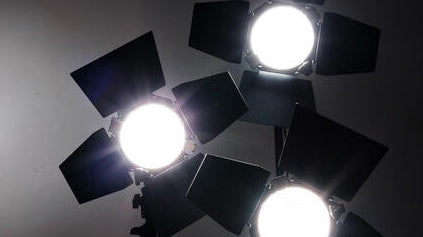
Mastering the Basics: A Guide to Setting Up Video Lighting for Professional-Looking Videos
Share
Video lighting is an essential component of creating professional-looking videos. Whether you're a YouTuber, a filmmaker, or a video producer, lighting can make all the difference in the quality of your work. In this article, we'll go over the basics of how to set up video lighting for your next project.
1.Determine your lighting needs
Before you begin setting up your video lighting, you need to determine what your lighting needs are. Consider the type of video you're creating, the location, and the mood you want to convey. This will help you choose the right type of lights and set them up in the most effective way.
For example, if you're creating a talking head video, you'll want to focus on lighting the subject's face evenly to avoid harsh shadows. If you're shooting a dramatic scene, you might want to use more dramatic lighting to create a moody atmosphere.
2.Choose the right type of lights
Once you've determined your lighting needs, you'll need to choose the right type of lights for your setup. There are three main types of lights used in video production: key lights, fill lights, and backlights.
Key lights are the main source of light in your setup and are used to light your subject's face. Fill lights are used to fill in any shadows created by the key light, while backlights are used to separate the subject from the background.
There are several types of lights you can use for each of these roles, including LED panels, softboxes, and fresnel lights. Each type of light has its own advantages and disadvantages, so it's important to choose the right one for your needs.
3.Set up your key light
The key light is the most important light in your setup, as it's used to light your subject's face. Start by placing your key light at a 45-degree angle to your subject and slightly above eye level. This will create a flattering look and minimize shadows.
If you're using a softbox or diffuser, make sure it's positioned in front of the light to create a softer, more even light. You can also use a reflector to bounce light back onto your subject's face and fill in any shadows.
4.Add fill and backlight
Once you've set up your key light, you can add fill and backlight to your setup. Fill lights are typically placed on the opposite side of the key light and are used to fill in any shadows created by the key light.
Backlights are placed behind the subject and are used to separate the subject from the background. This creates a more three-dimensional look and adds depth to your video.
5.Adjust your lights
Once you've set up your lights, you'll need to adjust them to get the perfect look. Start by adjusting the brightness of your key light to make sure your subject's face is well lit but not overexposed.
Next, adjust your fill and backlight to create the desired look. You can adjust the angle and distance of your lights to create different effects.
6.Check your white balance
Finally, before you start filming, make sure to check your white balance. White balance is used to adjust the color temperature of your lights to make sure your video looks natural.
Most cameras have an automatic white balance setting, but you can also set it manually. Use a white balance card or a white piece of paper to set your white balance and ensure your colors look accurate.
In conclusion, setting up video lighting is an essential component of creating professional-looking videos. By determining your lighting needs, choosing the right type of lights, and setting them up correctly, you can create stunning videos that are sure to impress. Remember to take your time and adjust your lights as needed to get the perfect look for your video.
